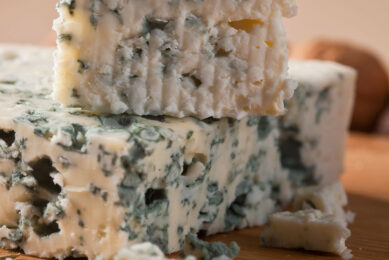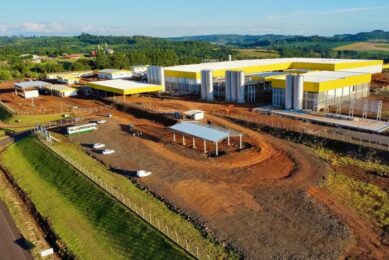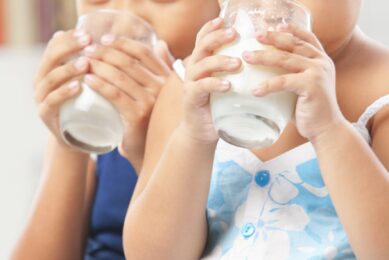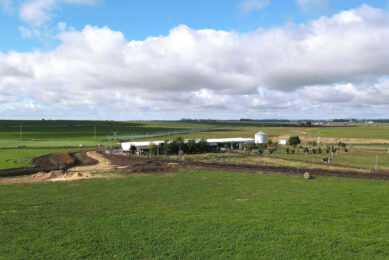New Dairy Global magazine online

The first issue of 2019 of Dairy Global magazine is now available to read online in our digital magazine section.
The January / February edition of Dairy Global Magazine is out and can also be read in our digital magazine section. To access the magazine section, you simply need to register for free. This first edition of the year is packed with the latest developments in dairy farming around the world: from technical articles to farm reports.
Gradual recovery for Brazil
In this issue we take a look at the dairy situation in Brazil. The year 2018 was a difficult year in which Brazil faced political uncertainty, the truck driver strike and the economic crisis that has affected Brazil since 2014. This also had an effect on the already ‘somewhat’ weak dairy export position of the country. Nevertheless, several experts forecast better times for the Brazilian dairy sector. According to a recent report over Q4 2018, Dutch agrofood banker writes that milk production has grown in Argentina, Brazil and Uruguay in Q4, and farmers will start 2019 in a better position than they started 2018. Demand will remain subdued in Argentina, but a gradual recovery is expected for Brazil, with imports set to recover. Read more on page 8 of this issue.

Is the end nigh for the diesel engine?
Also in this first edition of the new year, we delve a bit more into agricultural machinery and the trends seen here. Is the end nigh for the diesel engine? Electrical power in particular is becoming increasingly popular in agriculture, and not for just the self-driving manure and feed shovelling robots in stalls or a forklift truck in the store. These lightweight machines require relatively little power and remain close to the mains outlet, so they were also the first to become electric.

Now the technology exists for the large, heavier equipment. Various electric trial models have already been launched. They tend to be mini-loaders and feed mixing trucks, such as the self-propelled E-truck from Siloking for example. While everyone agrees that conventional fossil fuels have had their day as the primary energy source, the experts have no idea what will happen for tractors and when. After all, they must remain usable at full capacity over long periods. Read more on page 10.
Buffalo farm in India
Something different in this edition of Dairy Global is the farm report from India. We take a look at the farm of Sunil Jagannath Badhale and his son Sumit with 12 dairy cows and 438 water buffalo. A big farm, considering that the average farm size in India is 2 cows per farm. Mr Jagannath Badhale has dedicated itself to water buffalo, because many Indians prefer buffalo milk over normal cow’s milk. There is a large age variation in the herd of farmer Badhale. The youngest lactating cow is 3 years old, the oldest cow is 20. The average annual production is approximately 1,200 litres of milk per year. Water buffalo give less milk than the traditional Indian cow, but there is a much higher milk price involved in it. He can sell buffalo milk for € 0.75 per litre, while cow’s milk yields € 0.50 per litre. Read more about how Mr Jagannath Badhale runs his farm on page 28.

Farm visit Israel
We also went to Israel for this issue. Israel is one of the world’s top dairy producers having climbed the ranks since the 1950s with the aid of effective breeding policies and technology. It has around 135,000 dairy cows producing 1.56 billion litres of milk per year on a quota system. There are less than 800 dairy farms in the country which have, until now, been able to supply the home market with fresh milk, cottage cheeses and yoghurts. Those farms comprise of 625 Moshav farms which are private family owned, and 162 Kibbutz farms, which are cooperative run dairy farms. On January 1, 2019 the Israeli government opened its doors to dairy imports in a bid to increase trade and become more competitive. Read more about the visit to dairy farmer Jonathan Amir who runs a 70 cow milking herd at HaYogev in northern Israel.

Also in this issue:
- Probiotic yeast for better reproduction
- MiXScience Research Centre boosts cow nutrition research
- Trends in cattle feed production
- Price fluctuations decrease in dairy market
- Germany is leading in organic dairying
- New £1 million project researches dairy cattle
To read all the articles in this issue, go to the magazine overview page and sign up with your current website login.
Join 13,000+ subscribers
Subscribe to our newsletter to stay updated about all the need-to-know content in the dairy sector, two times a week.










